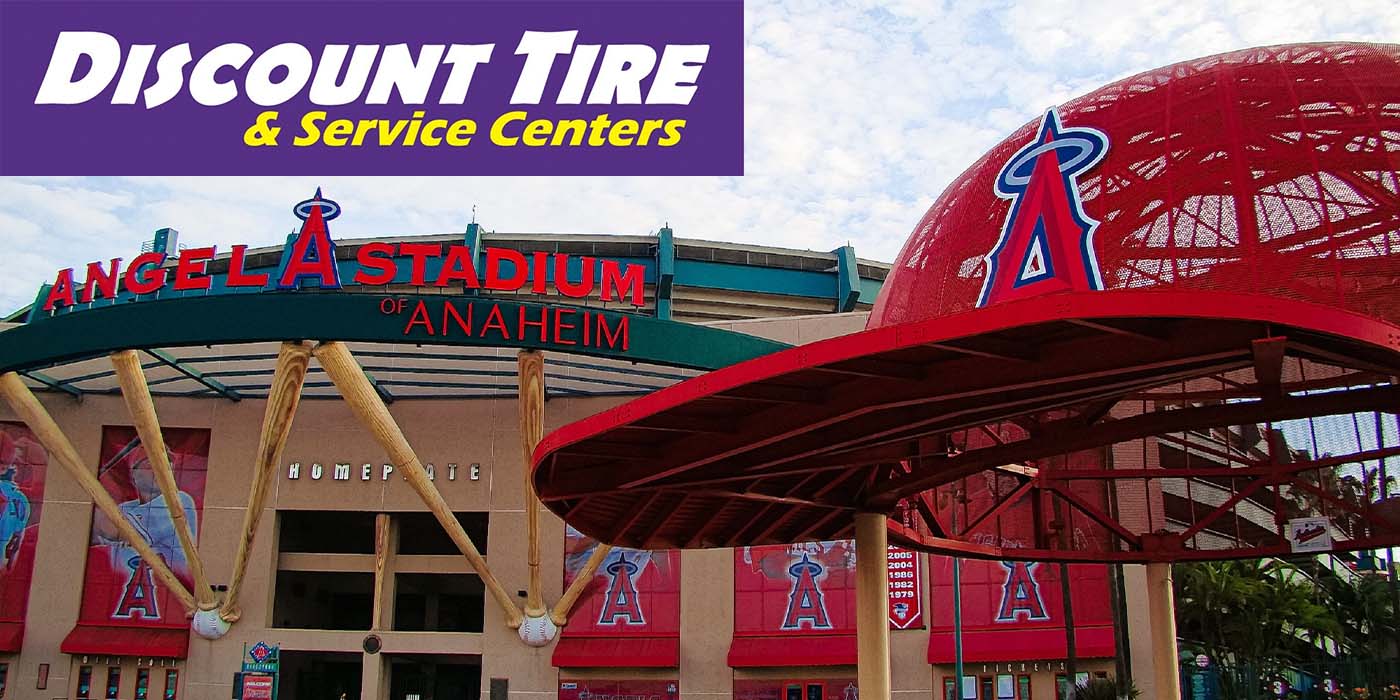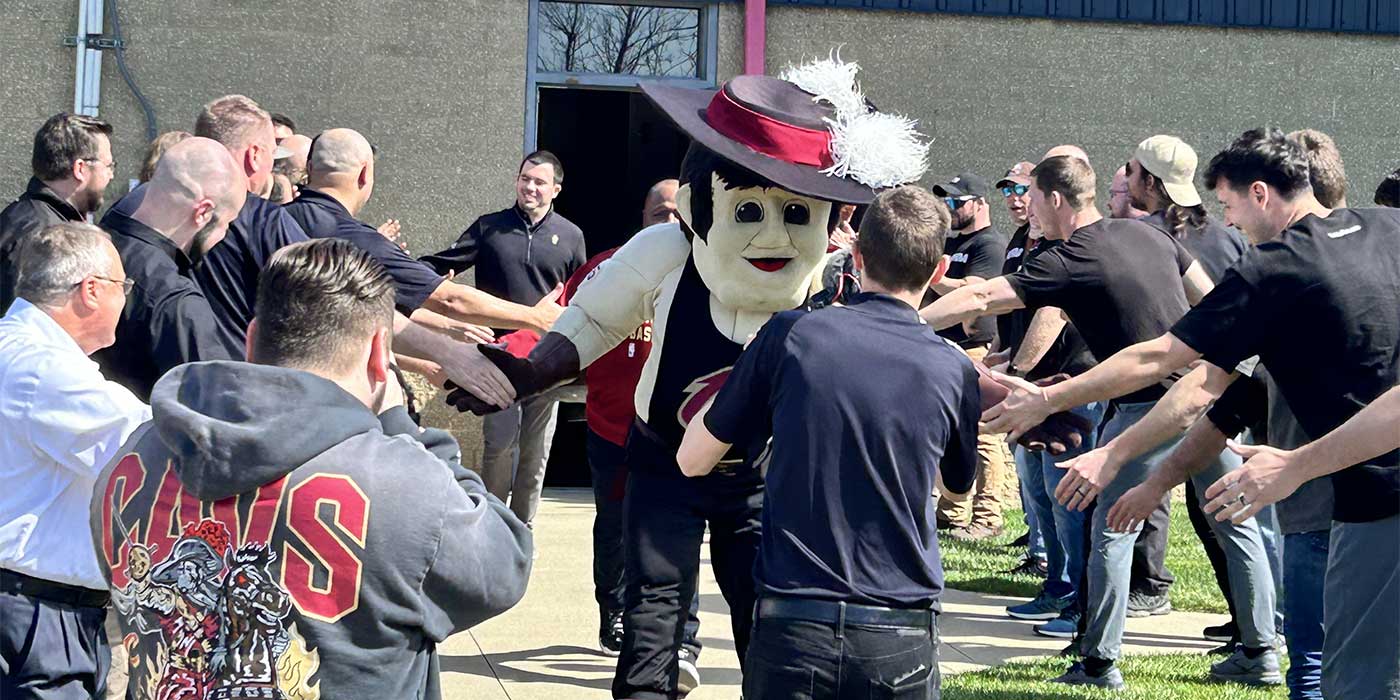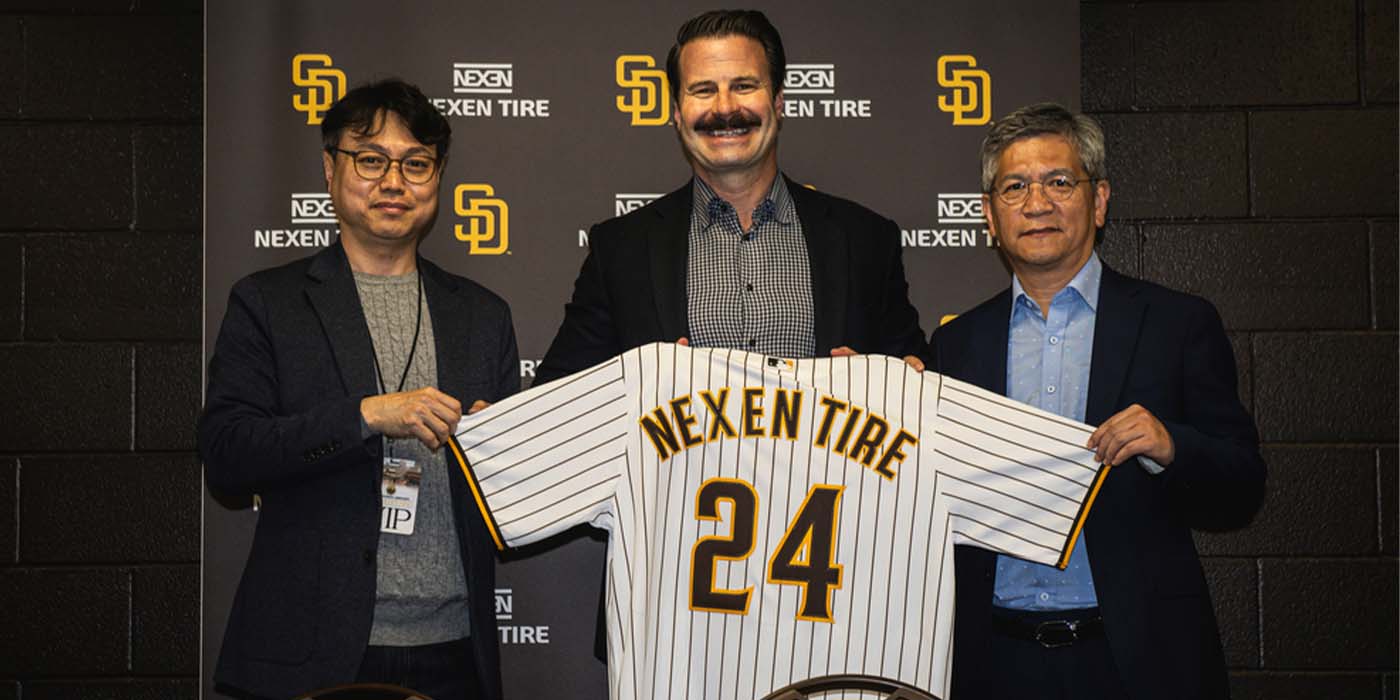All one has to do is look at the prices – in large, doomsday-sized letters – that hang outside most establishments selling gasoline or diesel fuel. Then the calculator in the left side of the brain begins to register. The results are usually the same: Holy Refinery!
Everywhere you look gasoline hovers around $4 a gallon, and (sadly) you’re somewhat excited when it dips below that level.
Truckers and fleets have it even worse, with the average price of diesel fuel at about $4.65 a gallon.
Against thinning wallets, raw material and energy costs, as we know too well, have driven tire prices up, putting a bigger pinch on consumer and commercial accounts.
Fuel and tire prices notwithstanding, several other elements have contributed to a changing economy. Let the economists and politicians battle over technicalities – such as whether or not we’re in a recession, downturn, collapse, decline, depression, etc. – as far as the general consumer and, in this case, tire dealers are concerned, if it looks like a duck and quacks like a duck, it must be a duck.
The question that remains for today’s tire retailers, wholesalers and distributors is: Regardless of what you call it, how do you remain competitive in today’s tough economic times?
“It’s going to take a lot more salesmanship,” says Ross Kogel Jr., president of Tire Wholesalers Inc., based in Michigan, where the unemployment rate (8.5%) is the highest of all the 50 states and the District of Columbia.
“Dealers need to feature a private brand or proprietary tire to increase their gross margins,” he says. It’s all about getting customers just to come into your stores, Kogel says, “because, if you can’t improve car count, your only choice is to improve the dollars made on each retail customer.”
The concerns of tire dealers (and most businesses across the country) are well founded. For starters, the price of a barrel of oil – hitting record highs on almost a daily basis – is certainly the accepted universal indicator. However, consider the following data from the U.S. Department of Labor:
• In May 2008, the unemployment rate rose from 5.0% to 5.5% – the highest it has been since October 2004.
• After five years of steady growth, employment (non-farm) continued its downward trend (minus 49,000).
• Also in May, employment continued to fall in construction, manufacturing, retail trade, and temporary help services, while health care continued to add jobs.
• The U.S. import price index rose 2.3% in May, following advances of 2.4% in April and 3.0% in March, driven by rising prices for both petroleum and non-petroleum imports.
• The price index for overall exports advanced just 0.3% in May after rising 0.5% the previous month.
With all this, consider that Dow Jones Industrials dropped 4% and the S&P 500 dumped 3% during the last week of June, with the Dow down 20% from October 2007. And foreclosures through the first three months of 2008 rose more than 112% over last year. More than 155,000 families have lost their homes to foreclosure this year – one out of every 194 U.S. households.
The news is certainly not good for automakers, either. Sales are down across the board, with GM (-18%), Ford (-28%), Chrysler (-38%) and Nissan (-38%) posting huge sales declines in June. Even Toyota, No. 2 in U.S. sales, saw a 21% year-over-year decline that month.
It would stand to reason that the tire industry would mirror the economic woes of the rest of the U.S. economy and business in general.
In March, the RMA said 2008 tire shipments would remain at or near levels reached in 2007, with growth in the replacement markets offset by declines in the OE markets. Keep in mind that 2007 was not considered to be a great year, with shipments off between 5% and 7% vs. 2006. Now, the RMA expects overall shipments to be off 4% for 2008. Anecdotal reports from tire retailers suggest that true retail sales could be down 8% to 12%.
In short, things are not good, and that puts a ton of added pressure on small businesses – like tire dealers.
So, Where Do We Go?
TWI’s Kogel believes that the path to solvency – or at least getting through this difficult economic situation – is through education.
“You have to view every situation as a profit opportunity,” Kogel says. “Everyone within your organization has to be aware of that, and they must all focus on salesmanship. Of course, that, too, means that you look for higher-margin tires – maybe a private label – but you need a ‘go-to’ tire.”
John Donovan, vice president of sales at Paul Sullivan Tire based in Norwell, Mass., just south of Boston, has a similar viewpoint. “We always live with the philosophy of staying alert and being prepared for the ‘big storm,’” Donovan says. “We operate conservatively, but we are constantly taking steps right away to prepare for anything unexpected in the future.”
Sullivan’s New England area has been particularly vulnerable these days, and the economy doesn’t appear to be improving quickly. The New England Economic Partnership recently predicted that growth across the region would lag behind that of the national average through 2010, citing “broadening effects of the national credit crisis and economic vulnerabilities extending from the housing market to other sectors of the economy.”
Donovan says that Sullivan Tire is cognizant of his region’s status and is “raising awareness that we’re in for a fight,” and that the entire organization is actively involved.
“With [tire] costs increasing and the consumer buying less,” he says. “It’s obvious that we’re not going to sell our way out of this – we’re going to manage our way out of this. But you can’t give up what you’ve already worked hard to get.”
That’s why, ironically, Donovan is hiring more salespeople.
“We’re trying to put more people on the ‘firing line.’ A lot of dealers are discounting, but we’re implementing price increases as they come – immediately. We’re not going to mortgage the business to save. We can’t afford to eat the price increases. We have to stay in business.”
Sullivan has passed along the usual edicts to the masses laced with themes of spending less. This has also been supplemented with an $8.50 fuel surcharge on deliveries, an increase in labor rates of 3% to 5%, and an increase in the number of telephone and conference call meetings (as opposed to in-person meetings demanding more time, fuel, food, etc.).
However, Donovan says that there are other opportunities within every organization to make money with what is already there.
“Scrap!” he says bluntly. “We have investigated the value of scrap – rotors, copper, brass, lead, steel, etc. There are scraps of metal all around a shop and these turn into dollars. What’s more important is that there is 100% profit.”
Although he didn’t say how much profit Sullivan is making from its scrap, Donovan says that they are so intent on this area that they have already assigned a “scrap person” to the task of identifying opportunities throughout the organization.
Another tactic that Sullivan Tire has implemented is a focus on preventive maintenance.
“We have developed phone centers,” says Donovan, “and we have tire-buying consultants that take calls from customers and explain the importance of keeping their vehicles in good operating condition. It’s not only a message of good economics, but a safety message, as well.”
Some other considerations prominent in Donovan’s mind are Sullivan’s compensation costs – but from a different aspect. “We are always concerned about our employees being able to handle the economy, too,” says Donovan. “We have to stay knowledgeable about the price of goods that our employees have to buy. We always have to keep that in mind.”
Adapting to Challenges
The West Coast, and California in particular, has been severely impacted by the state of the economy. In addition to the impacts of the housing slump, California’s unemployment rate is at 6.8%. Only Mississippi, Alaska, Rhode Island and Michigan are worse.
It’s easy to understand why Mountain View Tires’ 30 stores in California took a hard course of action. “Sadly,” says Mountain View vice president Chris Mitsos, “we have to pass price increases along to the consumer. We don’t run a 20% gross margin business.”
Mountain View is a Goodyear G3 Xpress dealer and Mitsos says 90% of his sales are either Goodyear, Dunlop or Republic brands. However, he says that mix is changing slightly.
“We’re seeing about 62% to 64% Goodyear (premium brand) with Republic (entry level) around 20%.” The change in mix, Mitsos says, is the result of a more value-driven consumer. “Where the consumer would usually spend on the average about $120 per tire, they’re looking at spending about $80 today.”
The only positive to the situation experienced by Mountain View is that they were ready for it.
“California is usually ahead of the country in most things,” says Mitsos. “We saw it (the downturn in the economy) last year. We probably hit rock bottom last October. Our labor expenses, utilities, etc., were increasing, but by the end of 2007 we had steps in place to minimize the effect.”
Mitsos says it was painfully simple. “We just needed to determine how to spend less.”
He says their plan started with the payroll. They enforced a no-unauthorized or unnecessary overtime mandate, and were “less tolerant of employees who didn’t pull their own weight.”
Then, they focused on the customer. “We knew we had to take care of our customers,” he says. “We have a world-class organization and we’ve created a culture that focuses on the customer. Our research indicated that those customers were being more careful about how they were spending their money on repairs. They were playing a waiting game.”
Mitsos suggests that California and the rest of the country are just reflections of a broader metamorphosis. “The neighborhoods have changed considerably over the last 30 or so years,” he says. “That’s why we continuously look at our store locations and adapt to those changes. For example, this past November, we sold a store in Mission Viejo. Then we opened up a new store about a month ago. The point is, as a part of our customer focus – especially during these times – we are examining markets and where we need to be.”
The bottom line, though, Mitsos insists, is “how well your people are performing. Certainly dealers are struggling, but you have to remain introspective and focus on what you can do. It’s easy to ‘talk the talk,’ but it’s difficult to ‘walk the walk.’”
Adding Value
However, fellow Californian Fred Taylor, president and CEO of USA Express Tires, has a different plan. While they take lower margins on tire transactions these days to retain customers, they also are doing some things that don’t cost much money and bring greater return.
“In these times, you have to differentiate yourself from your competition,” Taylor says. “When you service a vehicle, about 80% of the consumers feel no detectable difference in the performance of their vehicles – especially if it’s belts, hoses, brake flush, etc. What we do now is we wash the front and back windows and vacuum the front seat of the car. It just takes a few minutes but they can see a difference, and, in their own minds, it helps them justify the expense. It’s just a personal touch.”
Taylor says that while USA Express appears to be in the tire and automotive service business, they’re really in the relationship building business. “We just happen to sell tires. There’s a level of stress and lack of knowledge in the consumer and we have to go out of our way to address that. The things we are doing aren’t rocket science, and cost no money, but they help us keep customers,” he says.
USA Express Tires also follows up every service job with a phone call. “Nine times out of 10 we’ll get voice mail, but we just leave them a message thanking them for their business,” says Taylor. “It’s another personal touch, and people appreciate it and, most importantly, they’ll remember it.”
In the Midwest, the economy is no better – or worse – than the left coast. Kentucky has been especially vulnerable. In its most recent review of economic indicators, the state’s budget director bluntly said, “The inability to string together a sustained pattern of growth in the leading index indicates that the Kentucky economy will maintain its current course for the foreseeable future.”
That’s not news that Ken Towery Tire of Louisville wants to see. However, it doesn’t surprise Joanne Towery, executive vice president. “In June we hit the wall,” she says. “Our tire unit sales were flat – down 1% to 2%. Our stores are telling us that customers aren’t coming in until there’s no tread left on their tires. People are pushing them to the max.”
Towery says they are doing everything they can to remain competitive. “We’re watching our expenses, implementing cost controls, improving productivity relative to tires per working hour and focusing on training more.” The training element, she says, revolves around two areas: employee training in customer skills and providing salespeople with the skills to determine a customer’s minimum and maximum service needs.
The Usual Suspects
“Through our parts supplier we’re offering customers a $30 gas card if they purchase $250,” she says. “We’re also promoting ourselves as a ‘free air’ headquarters, something that we were offered through a Goodyear promotion.”
Introduced in May, the Goodyear “Free Air” promotion is designed to help consumers maximize their fuel economy and also improve their tires’ performance and tread life. Motorists can have their tires – regardless of brand or where they were bought – inspected for free at any Goodyear-owned location and at participating independent dealers.
For John Marshall of Grismer Tire in the Dayton, Ohio, area, the economic scenario is about the same. Four Delphi plants in Dayton were victims of bankruptcy, and GM halted SUV production at another nearby plant. Grismer has 24 retail outlets and, in spite of the economy, is building another one.
“We’re seeing our costs go up and it’s harder to pass those costs along to the consumer,” Marshall says. “People are keeping their cars longer and driving less. Certain things they can postpone, but we try to let them know that a little bit of preventive maintenance can help them in the long run.”
To combat the effects of the economy and remain competitive, Marshall and Grismer have reverted to some old fashioned tactics. “We’re taking a strong look at the price unit our vendors are charging us and we’re watching overall expenses,” he says. “We’re doing more promotions, direct mail and haven’t had to pass the [tire price] increases along yet. Yet.”
When the economy will settle is anyone’s guess, and before it does we may well see a number of auto service – and tire dealer – locations shut down. Despite tight times, these dealers are taking active steps to improve sales and cut costs – basically keep the doors open and show even modest growth.
Consumers, too, are taking often-dramatic action – like putting off much needed service or deferring tire purchases – just to make ends meet. Obviously their attitudes have changed, and one wonders if those changes might outlast our flat economic picture. After the economic dust settles, will we be dealing with a different kind of consumer – one, perhaps, more frugal and even more value-oriented than before?
After all is said and done, how different will your business be? More importantly, will you be able to address a new kind of tire and service customer?













